A path through the green of the chestnut trees that from the center of Roccamonfina reaches the summit of Mount Lattani, in the heart of the ancient caldera of the now extinct volcano. Not only a splendid walk in nature, to conquer the spectacular views of the nearest mountains, up to the Matese and, even further, to the Phlegraean coast. But the ascent to a place of history and faith: the sanctuary of Holy Mary of the Lattani.
Destination for pilgrims from the surroundings and from every part of Campania for more then six of centuries.

Milk also has a place in the origin of the sanctuary, now legendary. It is said that a young shepherd took his goats to pasture on the mountain every day. And every day one of the little animals separated from the flock, the same one that in the evening, returning to the fold, gave more milk than the others. Intrigued, the shepherd followed her one morning to a cave, in front of which the goat stopped to graze. He entered the cave, where he found a snake with two keys in its mouth, guarding a chest. The boy, frightened, ran into the village, telling what he had seen. And, followed by the villagers, he led them to the cave, where the snake handed them the keys to the chest. Once opened, inside it revealed an icon of the Madonna on a stone slab. Great was the surprise and, later, the devotion to that image that spread among the people. So much to attract the attention of S. Bernardino from Siena and S. Giacomo of the Marca, who in 1430 wanted to support that spirituality by building a small rural church, a convent and a hermitage in the place where the icon was found.
A few years later, in 1448, the affluence on the Lattani had grown so much that it was decided to expand the church, completed in 1507. Meanwhile, in 1448, Pope Eugene IV had entrusted the entire complex to the Franciscans.
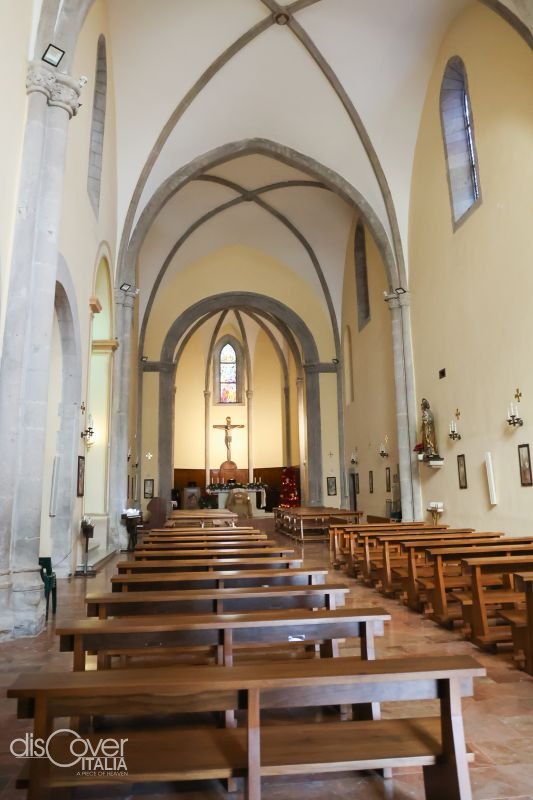
 From the entrance portal you enter a courtyard overlooked by the three buildings of the sanctuary. The late Gothic church has a porch surmounted by a large round arch, which introduces into the interior, a single nave divided into spans by pillars that support the pointed cross vault. It is embellished with 15th and 18th century frescoes and Gothic windows with polychrome glass. In the central chapel on the left on the altar of colored marble is the icon of the Madonna enthroned with the Child, who holds the world with a cross in her left hand and a dove in her right. Originally, the image, which may date back to the ninth century, was gray, it was later painted. The ceiling is also frescoed and the particularity is a very rare depiction of the pregnant Madonna. Also on the left of the church, a small door leads into a space where gifts from the faithful are accumulated: there was the cave of the famous find.
From the entrance portal you enter a courtyard overlooked by the three buildings of the sanctuary. The late Gothic church has a porch surmounted by a large round arch, which introduces into the interior, a single nave divided into spans by pillars that support the pointed cross vault. It is embellished with 15th and 18th century frescoes and Gothic windows with polychrome glass. In the central chapel on the left on the altar of colored marble is the icon of the Madonna enthroned with the Child, who holds the world with a cross in her left hand and a dove in her right. Originally, the image, which may date back to the ninth century, was gray, it was later painted. The ceiling is also frescoed and the particularity is a very rare depiction of the pregnant Madonna. Also on the left of the church, a small door leads into a space where gifts from the faithful are accumulated: there was the cave of the famous find.
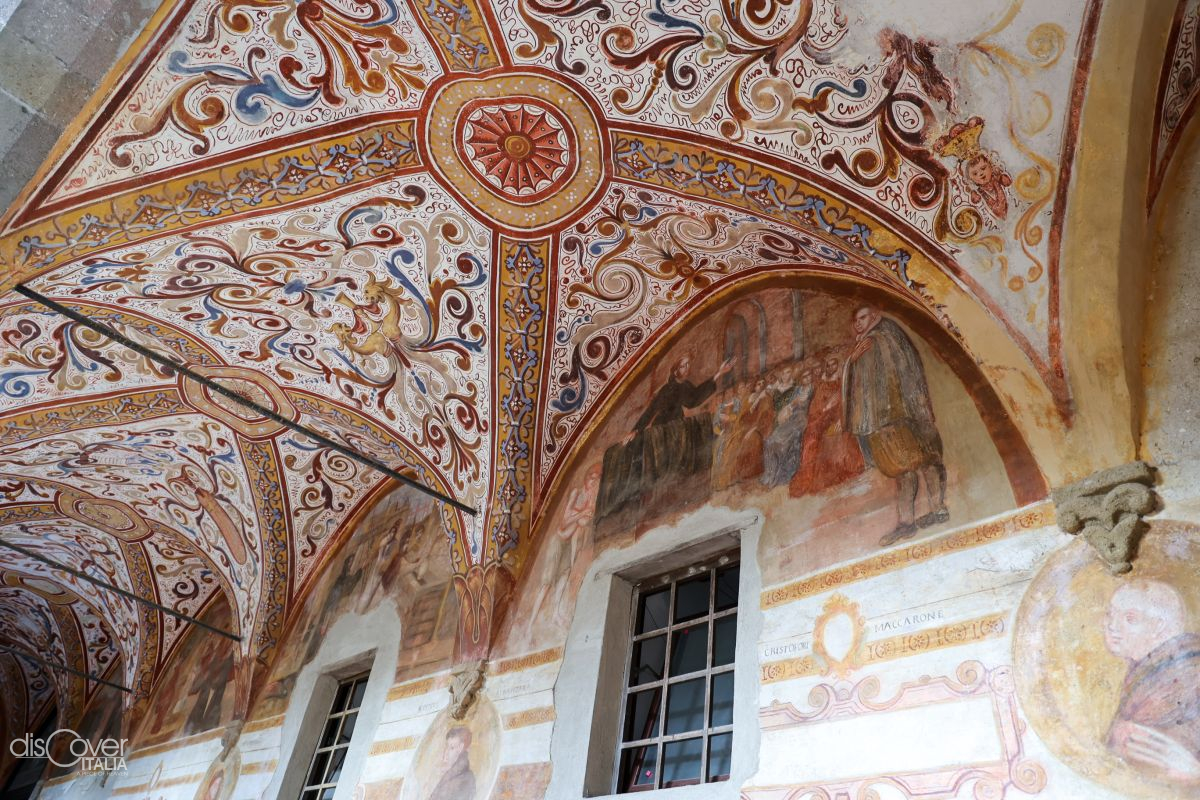
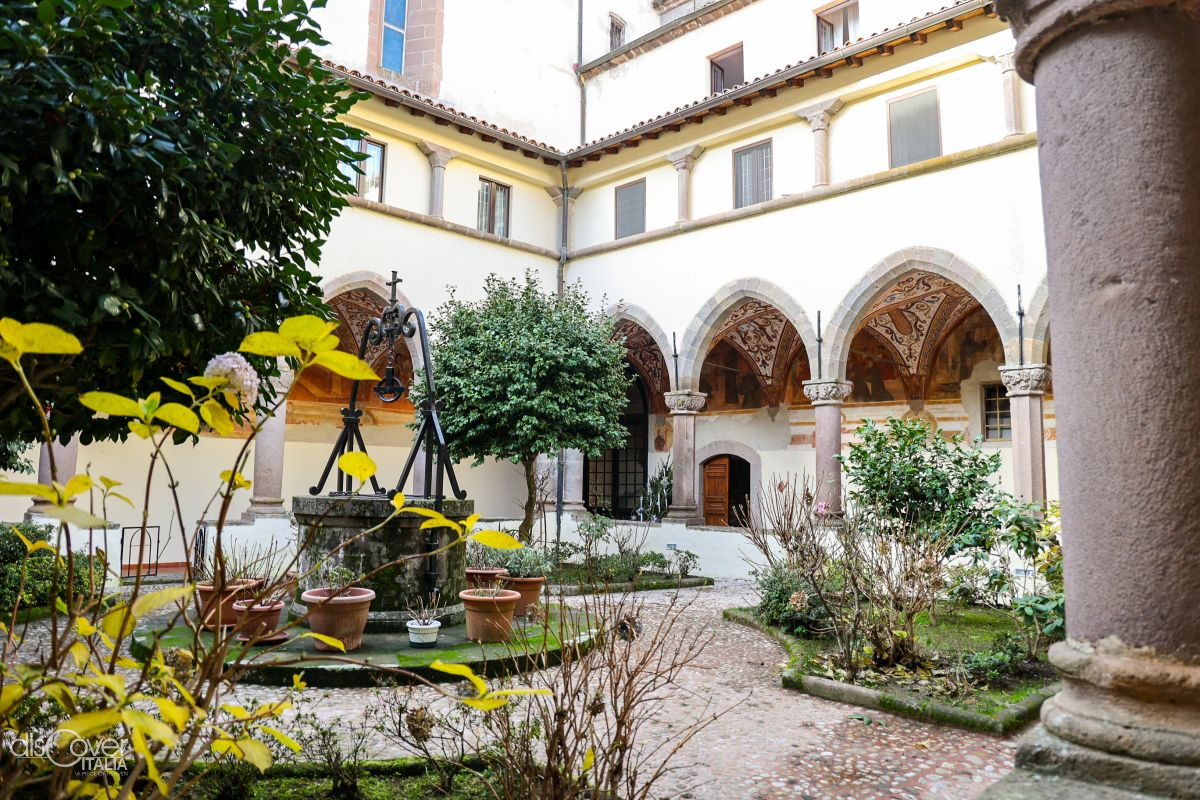
Next to the church stands the cloister. On the ground floor there are four stone arches supported by pillars also of gray tuff. The other two floors have simple windows, apart from one with a particular molding which culminates in a rose window. From the ground floor you enter the beautiful quadriportic cloister which is distinguished by magnificent seventeenth-century frescoes with scenes from the life of St.Francis by Father Tommaso from Nola. In the center is the well surrounded by plants. In front of the church is the hermitage of S. Bernardino, a Gothic building on three floors, overlooking the external landscape.
In the courtyard, the hexagonal Fountain of the Madonna bears a majolica painting from the 1900s that illustrates the history of the discovery of the icon. Water is reputed to have miraculous properties for women who want to be mothers who drink it. The sanctuary in 1970 was erected as a minor basilica by Pope Paul VI.
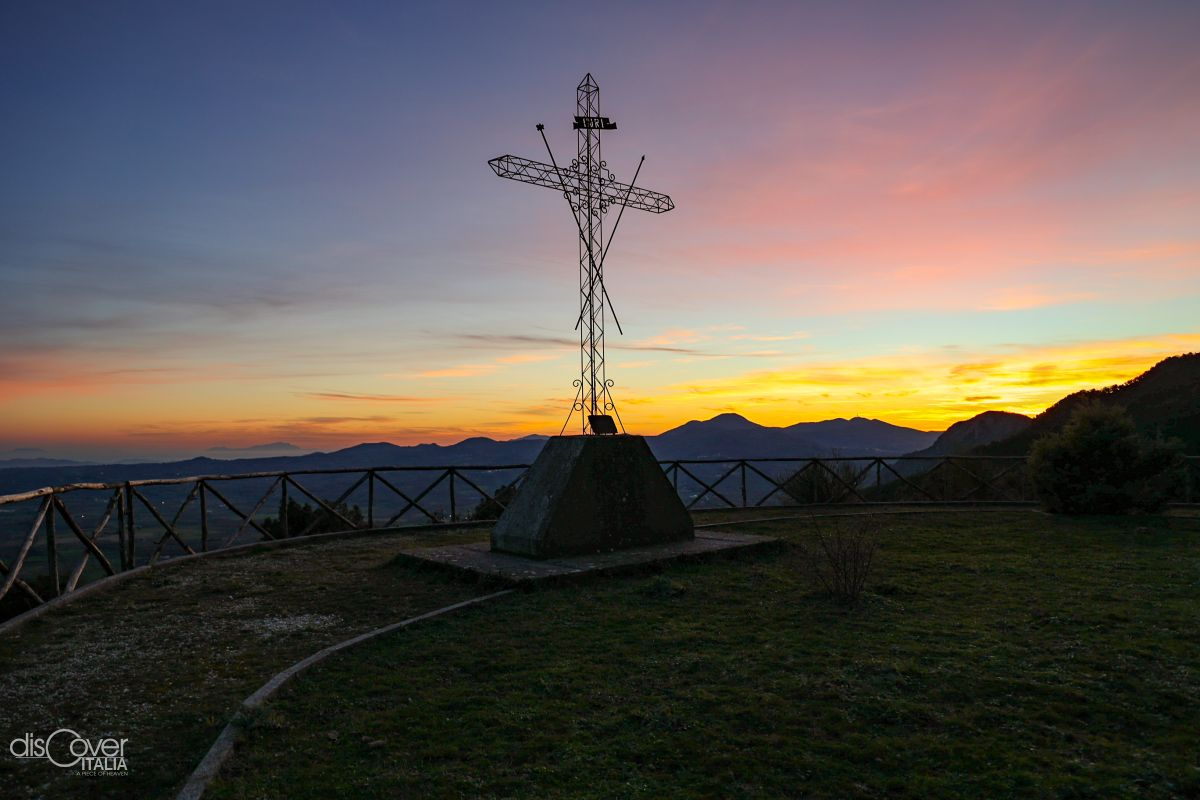


 From the entrance portal you enter a courtyard overlooked by the three buildings of the sanctuary. The late Gothic church has a porch surmounted by a large round arch, which introduces into the interior, a single nave divided into spans by pillars that support the pointed cross vault. It is embellished with 15th and 18th century frescoes and Gothic windows with polychrome glass. In the central chapel on the left on the altar of colored marble is the icon of the Madonna enthroned with the Child, who holds the world with a cross in her left hand and a dove in her right. Originally, the image, which may date back to the ninth century, was gray, it was later painted. The ceiling is also frescoed and the particularity is a very rare depiction of the pregnant Madonna. Also on the left of the church, a small door leads into a space where gifts from the faithful are accumulated: there was the cave of the famous find.
From the entrance portal you enter a courtyard overlooked by the three buildings of the sanctuary. The late Gothic church has a porch surmounted by a large round arch, which introduces into the interior, a single nave divided into spans by pillars that support the pointed cross vault. It is embellished with 15th and 18th century frescoes and Gothic windows with polychrome glass. In the central chapel on the left on the altar of colored marble is the icon of the Madonna enthroned with the Child, who holds the world with a cross in her left hand and a dove in her right. Originally, the image, which may date back to the ninth century, was gray, it was later painted. The ceiling is also frescoed and the particularity is a very rare depiction of the pregnant Madonna. Also on the left of the church, a small door leads into a space where gifts from the faithful are accumulated: there was the cave of the famous find.



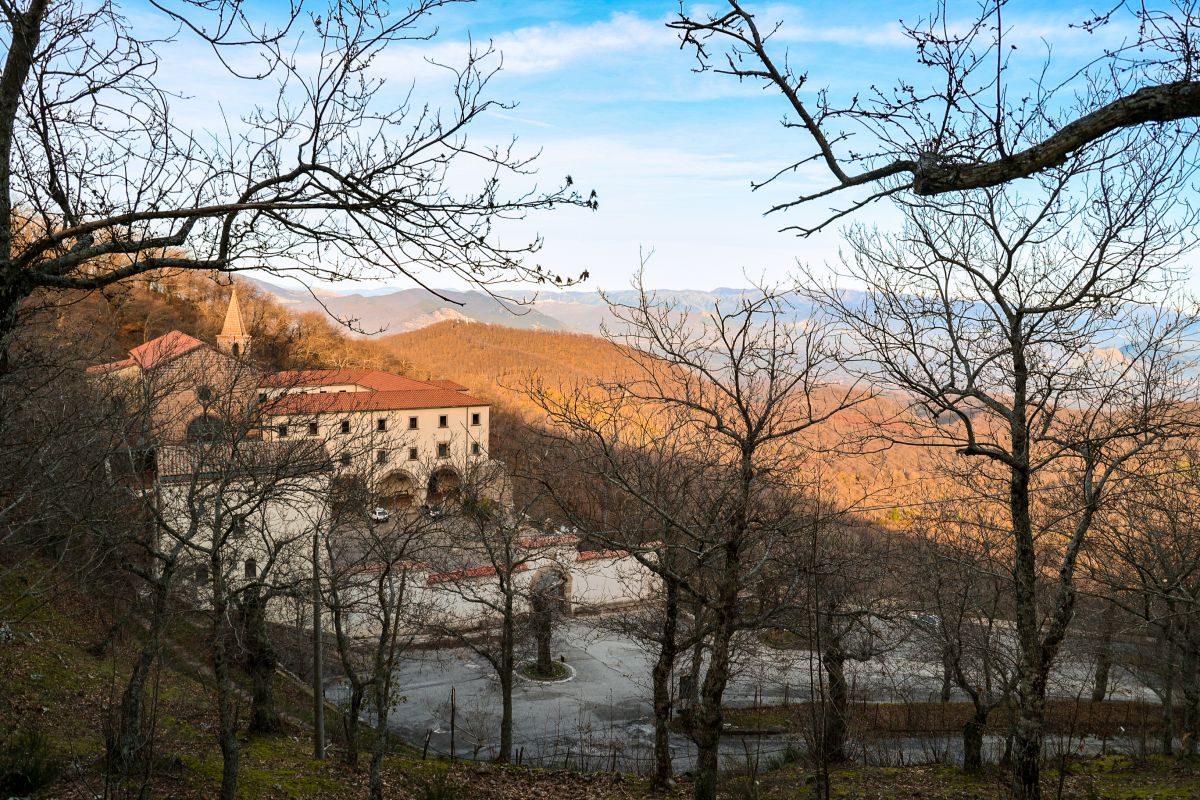


Comments powered by CComment